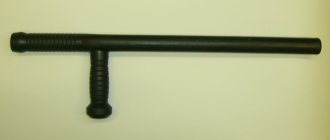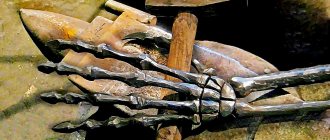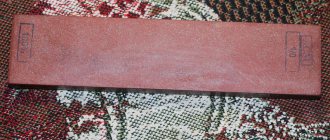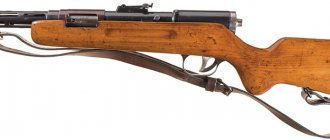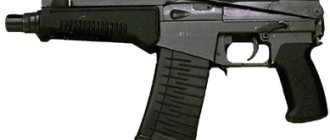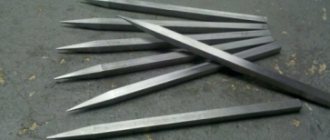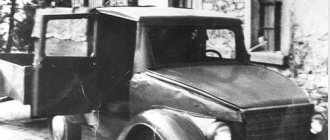Passed at speed
Usain Bolt came to London to bid a royal farewell to athletics. In fact, the gold-bearing sprinter lost to American Justin Gatlin, a man who has returned to action twice after doping suspensions. “Lenta.ru” is about the sad farewell of the great Jamaican to professional sports and the sprinter who overtook him in the last hundred meters of his career.
At approximately 21:45 London time, Justin Gatlin was kneeling in front of Usain Bolt. The first one had just won the 100-meter dash, the most spectacular and prestigious distance in athletics. The second in this race took such an unusual “bronze” place.
The Jamaican reached the final with the second result among all participants, although he looked difficult in qualifying. Bolt especially had a bad start; he even complained about the pads, which is not his style. The tournament organizers were quick to justify that the equipment met all the requirements. As a result, the Lightning never got off to a good start in any of the races. This was especially noticeable in the finale.
Bolt seems to be loved in every country in the world. So the London public greeted him as a national hero. According to tradition, he put on a small show named after himself, gave the whole world a smile, showed a signature gesture with his fingers and took a position in the low post. A little to his right ran Gatlin, who was booed by the demanding British. After a little less than ten seconds, he won't even remember about it. An American will win the world championship for the first time since 2005. Moreover, he will overtake Bolt for the first time.
Video: Sports Recap / YouTube
The confrontation between Gatlin and Bolt began long before the World Cup. And by many it is seen as a confrontation between clean and dirty sport. The Jamaican is an example of a decent sprinter, whom nature has endowed with incredible capabilities. He was never suspected of cheating, unlike, say, his teammates on the national team. Or from Gatlin himself.
By 2004, the then 22-year-old American had won an Olympic gold medal. It might not have been, because three years earlier traces of amphetamines were found in his body. Gatlin tried to justify himself, talking about attention deficit hyperactivity disorder, for which many athletes from the United States are being treated, but still received a two-year disqualification. A little later, the term was halved, and after the Games in Athens no one remembered her.
This story surfaced in 2006. Then Gatlin was the main sprinter on the planet. Hung with gold medals and praised by journalists, in July the American suddenly held a press conference at which he admitted that he had again been caught doping. This time the permissible testosterone level was exceeded. When asked how the prohibited drugs got into his body, Justin just shrugged. But for everyone who understands at least something about athletics, it was obvious: an athlete twice caught for doping, no matter how titled he may be, will be forever disqualified.
Justin Gatlin
Photo: Dylan Martinez / Reuters
His coach Trevor Graham came up with a strange and unnatural “excuse” for his ward. He accused a massage therapist of allegedly rubbing a drug that increases testosterone levels into Gatlin's skin. Graham, by the way, is now serving a life ban.
The two Americans were then ready to do anything to save Gatlin’s career. The current Olympic and world champion, world record holder, he had to continue to shine against the backdrop of Usain Bolt, who was rapidly gaining height. Only thanks to active cooperation with anti-doping services, Justin was able to save his career and get off with an eight-year ban. The IAAF left him the titles, but stripped him of the record. And reputation.
While Bolt was showing off in front of photographers with gold medals at literally every tournament he took part in, Gatlin was fighting for his future. The sprinter and his lawyers managed to reduce the period of disqualification to four years. Judging by his own words, during this period he rather did not live, but existed. Justin was even close to suicide, committed many reckless acts, became rowdy, spent the night in the police, in general, did everything to prevent his return to athletics from being triumphant.
In 2010, he again took to the treadmill, surprising with his excess weight and snail-like speed by the standards of modern sports. At the first starts, Gatlin was far from running out of ten seconds. Then the sprinter assembled a new team, went on a strict diet and began to plow.
Having missed the Olympics in Beijing, which was triumphant for Bolt, Justin began to progress. In 2012 in London, only Usain and his compatriot Yohan Blake ran away from him in the 100-meter dash. Surprisingly, the American, at an advanced age for a sprinter, began to run even faster than at 22. But he still could not defeat Bolt.
Photo: Fabrizio Bensch/Reuters
All this time, Gatlin's every local success was mercilessly criticized. Of course, after all, an athlete who served two disqualifications due to doping at once, in the opinion of most journalists and fans, simply should not have entered the starting line along with the “purebred” Bolt and other sprinters who have not tarnished their reputation with testosterone and amphetamine. The American did not pay any attention to this and continued to work.
At two World Championships and the Olympic Games in Rio de Janeiro, the Jamaican easily finished first, and Gatlin always saw his back closest. Although in Brazil the American threatened to finally overtake his younger rival. It happened only now, in London, at the last 100-meter race in Bolt’s career.
How to unscrew a bolt with torn edges: proven methods, step-by-step instructions (8 photos)
Many home craftsmen often encounter damaged fastening materials during repair work. Judging by the reviews, such deformations of bolts in vehicles and in everyday life are a fairly common problem. This explains why many beginners are interested in how to unscrew a bolt with a broken head. There are several ways to cope with this task. Having the right tool, according to experts, you will be able to unscrew almost any hardware and remove fastening debris, even with a torn head or a broken pin. You will learn how to unscrew a broken bolt from this article.
What is the cause of the breakdown?
So that you don’t have a question about how to unscrew a broken bolt, it is better to prevent breakage of the fastening material.
This means that it must be dismantled without significant physical effort. If you apply force and the fastener remains motionless, there is no point in continuing. Otherwise you will damage the hardware. What to do if the bolt does not budge? Let's look at different methods. First method
For those who do not know how to unscrew a bolt, we can first recommend removing rust and other contaminants from it.
You need to clean the threaded part, which in most cases protrudes above the parts being fastened. A wire brush is ideal for this purpose. Second method
Before unscrewing the bolt, experienced craftsmen recommend tapping its head with a hammer.
To disrupt the integrity of the oxides, it is advisable to hit the fasteners hard. The formation of small dents is not scary. It will be worse if the bolt itself becomes bent. This procedure is only acceptable at the beginning of work. Once the bolt is torn out of place, it is no longer advisable to knock on it. The fact is that there is a risk of damaging its thread. By heating
Those who are interested in how to unscrew a bolt so as not to damage its integrity can be advised to subject the fastener to strong heat. The essence of this method is that under the influence of high temperature, rust is destroyed and burns out. As a result, it will take less effort to unscrew the bolt. For this purpose, craftsmen use a blowtorch, gas torch or acetylene torch. Since you will be dealing with an open flame, be careful not to damage any objects around it. After heating, the bolt needs to be given some time to cool down.
Using a special liquid
How to unscrew a bolt without a hammer and a blowtorch? Experienced technicians will advise you to get kerosene, brake fluid or a special WD-40 compound. Having penetrated into all the cracks, the product will lubricate the threads and destroy the rust. Of course, for the effect to be positive, you will have to wait some more time after treatment. In most cases, this takes about an hour, less often – 10 hours.
If the fastening does not give in, and you still apply force, then most likely it will break.
In the future, dismantling such a bolt will take you much more time and effort. What to do if the fastening element does break? How to unscrew the broken bolt in this case? There are several ways to do this. Using a chisel
Before unscrewing a bolt with torn edges, you need to take into account parameters such as access to the fastener, its dimensions and location.
This will allow you to choose the right tool correctly. For example, it is more advisable to remove large bolts that are easy to reach using a hammer and chisel. The latter should be placed on the bolt head so that the cutting edge is applied tangentially. The hammer should be struck sharply. Judging by numerous reviews, this method is quite simple, but very effective. It is often resorted to in extreme cases. Dismantling using a key
If you have free access to the fastener, you can operate it using a universal adjustable key. The design of this tool allows you to clamp even round bolt heads. It may be that the thread has broken off on a very small bolt. It is removed using a small adjustable cobra key. In this tool, the working surface is equipped with sharp notches, through which dismantling is carried out. The main thing is that the key is new. The fact is that in a worn tool these notches can be “licked off”, as a result of which their adhesion to the fastening element will not be fully effective, and the key will simply slide off. If the edges of the bolt have minor damage, then you can cope with the task by using a spanner. The profile of this tool has 12 edges (there is a hexagon inside the head, not an asterisk). To tighten the fastener, you need to select a head that is one size smaller than the bolt. This head will be located at the site of the torn edges. It is enough to press it onto the bolt and then twist it as usual.
Using a screwdriver
If the fastening thread is damaged, the bolt should first be lifted using a screwdriver or other similar tool.
The main thing is that it fits under the head without any problems. Next, you need to press the screwdriver firmly so that the bolt comes out of the part as much as possible. If it gets stuck, start rotating it in the usual way. Good if you are dealing with a through threaded connection. In this case, push the fastener with something from the reverse side. By Trimming
You will need a hacksaw to remove the bolt. With its help, you first need to make a cut in the head of the fastener, into which a flat-head screwdriver will then be inserted.
It is advisable that the cut is not very deep.
It is best to go deeper with a hacksaw blade to 75% of the height of the entire head. Thus, it will be divided into two halves. If the cut is larger, then one of the halves may break off. It may be that your screwdriver will slip. This deficiency is corrected using a special glue based on cyanocryl. This product is designed for fast and high-quality bonding of metal surfaces. First, degrease the mount and screwdriver. Then apply the product to the body of the fastener and press the screwdriver firmly against it. At this stage it is important to maintain alignment. To make the glue set faster, additionally sprinkle the joint with baking soda. When the mixture has completely hardened, start twisting. Also, in addition to a hacksaw, some home craftsmen use needle files or an angle grinder with a cutting disc. With this tool you can process not only damaged fasteners, but also a wrench that can be used to unscrew a broken bolt. For example, craftsmen restore edges to the required size. If you are the owner of an open-end wrench, then you do not need to make a hexagon out of it. You can limit yourself to cutting out two parallel edges in it. Professional tool
According to experts, the above methods are quite effective if the torn fastener protrudes slightly from the plane of the part. What to do when the head of the bolt is torn off and the bolt itself is hidden?
It is best to acquire a special professional tool, namely an extractor.
The device is a metal cylindrical rod. One end is equipped with a tapered thread with an opposite cut, the other with a shank with a square section. Judging by numerous reviews, almost every motorist has this tool. The fact is that the bolts that secure the wheels to the hubs often break in vehicles. You can unscrew the bolt as follows. First of all, the fastener body must be equipped with a special hole for the extractor. It is desirable that the diameter of the hole be 0.2-0.3 cm smaller than the thread. Next, use gentle blows to place the extractor onto the body of the bolt. Now the device can be rotated by the shank, unscrewing the remaining fasteners from the part. About removing a broken bolt with a tap
An alternative to the extractor is a left-handed tap. As in the previous case, you will have to make a hole in the body of the bolt. You determine exactly what diameter you need using a special table for thread cutting. At this stage, you should ensure that the threaded connection of the bolt remains intact.
Next, cut a new thread in the finished hole with a tap.
As a result, the remnants of the bolt are removed. Judging by the reviews, it is not always possible to make precise drilling. If you are slightly off and therefore damage the threads of the fastener, simply drill the hole larger and tap with a larger diameter. What else can you do?
In addition to the above methods, you can use welding to remove a broken bolt. It is enough to weld a nut of the required diameter to the body, and then turn it with a regular wrench.
Material taken: Here

